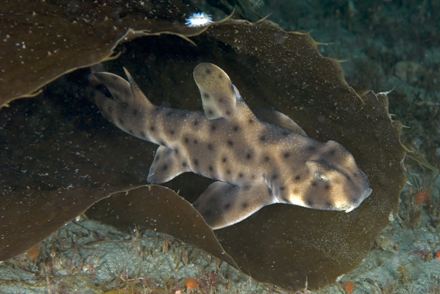Horn Shark (Heterodontus francisci)
The Horn Shark is a species of bullhead shark. It is native to the coastal waters off the western coast of North America, from California to the Gulf of California. They spend much of their time deep caves or structurally complex rocky reefs or algae beds, usually in shallower waters.
These sharks have a dangerous reputation for chasing down and biting divers. They also have a fin spine that can inflict a painful wound. These sharks generate the highest known bite force relative to its size of any shark.
The horn shark has a short, wide head with a blunt snout and prominent over the eyes. They have a relatively small mouth with 19 to 26 teeth rows in the upper jaw and 18–29 teeth rows in the lower jaw. Like many other sharks, their teeth will regenerate in about 4 weeks if one is lost. These sharks are various shades of gray or brown with many small dark spots, though these may be absent in older sharks; the underside is usually yellowish. There is a dark patch of small spots below the eye. This species may reach a length of 3.9 feet, though most individuals do not exceed 3.3 feet. They are a clumsy and sporadic swimmer that prefers to use its flexible, muscular pectoral fins to push itself along the bottom.
The Horn Shark preys on hard-shelled molluscs, sea urchins, crabs, shrimp, and isopods. They use their powerful bite force to crack the hard shells of their prey and suction to remove the flesh from the inside of the shell. Juvenile Horn Sharks prefer a diet of soft shelled prey.
Information courtesy of montereybayaquarium.org, wikipedia.org
Photo courtesy of divematrix.com

